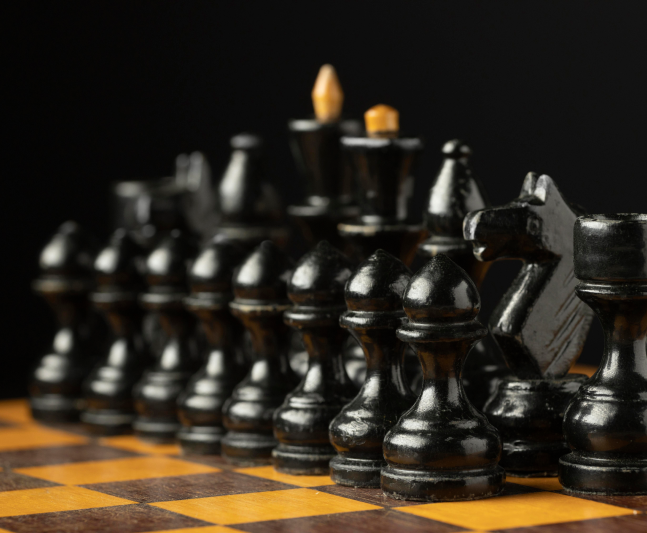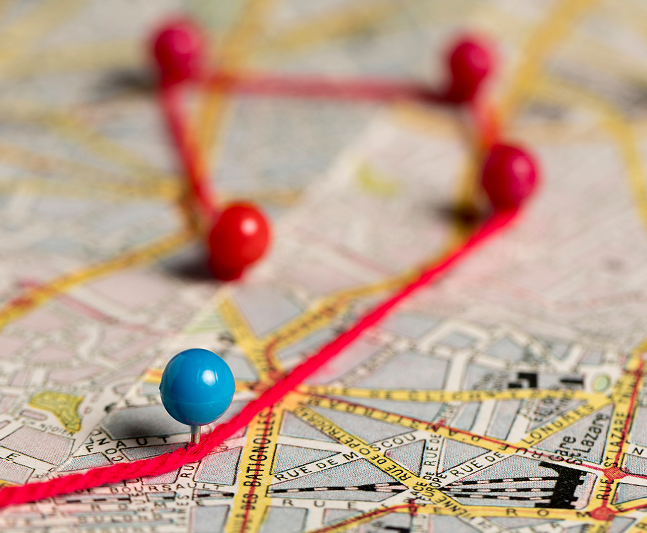Effective Exhibition Management Strategies for Driving Impact and Engagement
"Tactics is knowing what to do when there is something to do; strategy is knowing what to do when there is nothing to do." — Garry Kasparov
Exhibition management is much like a game of strategy. Every decision, from booth design to how you engage with visitors, shapes the outcome. Exhibitions are the vital platforms for brand visibility, lead generation, and stakeholder trust. Yet without careful exhibition planning and coordinated exhibition services, even the most striking setups can fall short of delivering ROI in exhibition event management.
That is why working with a seasoned exhibition management company like Blues N Coppers matters. With foresight, structure, and seamless execution, they help turn footfall into meaningful connections. As with any strategic game, it all begins with the opening moves. How you prepare before the event sets the stage for everything that follows.
Laying the Foundation with Pre-Event Planning
In chess, the opening is about controlling space, positioning pieces, and preparing for further moves. The same principle applies to exhibition management. Pre-event preparation shapes the possibilities available once the exhibition begins. The brands that excel are the ones that treat planning as strategic positioning rather than a checklist.
Strong exhibition planning begins with clarity. The objectives of exhibition participation must go beyond broad ambitions like “gain visibility.” Instead, they should be tied directly to business goals. Just as a chess player develops openings with specific outcomes in mind, exhibitors must align their every move with these objectives.
Key strategies during the pre-event phase include:
- Defining Objectives with Precision
Objectives act like opening principles in chess: control the board, develop your position, and prepare for the midgame. Measurable goals such as “200 new leads” or “50 scheduled demos” will ensure every decision contributes to a larger plan.
- Smart Budgeting and Resource Allocation
A chess master does not commit all their power too early. Similarly, budgets in exhibition planning should be distributed across booth design, marketing, staffing, and logistics. This balance avoids overspending in one area at the expense of another.
- Choosing the Right Venue and Layout
In chess, securing control of the centre early gives you pathways and flexibility later. Similarly, selecting a high-traffic venue and a strong location on the show floor offers a strategic advantage. It reduces barriers between your booth and your target audience, making it easier for people to find and engage with you. 72% of businesses are concerned about charges for floorspace and utilities, underscoring how critical venue decisions and cost structure are in exhibition planning. By optimising your layout, for example, placing interactive zones, visitor flow paths, and focal visuals, you turn venue control into a competitive edge.
- Booth Design and Branding
The booth is the exhibitor’s opening formation on the board. Partnering with an exhibition management company ensures the design is not just attractive but also functional, guiding visitor flow and reinforcing brand identity with clarity.
- Vendor and Partner Coordination
Just as pieces must work together in harmony, successful exhibitions require aligned partners. Coordinating logistics, technology, and utilities early can prevent weak links that can undermine the strategy.
- Risk Assessment and Contingency Planning
Skilled players think several moves ahead. In the same way, anticipating risks of shipment delays, tech issues, or staffing gaps is vital. Also, building contingency plans keeps the strategy intact even when surprises appear.
Expert Insight: As Thomas Edison once said, “Good fortune is what happens when opportunity meets with planning.” This sentiment underscores the importance of strategic preparation in exhibition management. According to Djazagro, for every €1 invested in a trade show, B2B companies can generate an average of €10 in turnover, provided their participation is strategically planned with clear, measurable goals.
Companies that invest time in pre-event planning often see tangible results. For instance, Blues N Coppers' collaboration with Jacob at Automation Expo Mumbai exemplifies how early coordination, optimised booth design, and vendor alignment transformed the exhibition experience. These pre-event preparations create the conditions necessary for effective marketing and audience engagement on the exhibition floor. Brands that excel are those that approach pre-event preparation as strategic exhibition event management rather than a checklist.
Marketing and Engagement Strategies: Building Anticipation
Just as a chess player uses strategic moves to lure the opponent into desired positions, effective marketing in exhibition management positions your brand to attract the right audience and maximise participation. Here, the goal is not just visibility but meaningful engagement, ensuring that every visitor who reaches your booth is primed to interact.
As researched by the exhibitor magazine, 33% of company managers are willing to spend less than 1% of their exhibit-marketing budgets on pre-show tactics. To achieve similar outcomes, effective marketing strategies should be looked into. They include:
- Targeted Digital Campaigns: Leverage platforms like LinkedIn, Twitter, and niche industry forums to reach professionals most likely to engage. Tailor content to highlight benefits, demos, or unique experiences that will be at the exhibition.
- Collaboration with Exhibition Services Providers: Partner with experienced exhibition services firms, like Blues N Coppers, to design promotional materials, interactive displays, and pre-event digital content that align with your brand and messaging.
- Pre-Event Audience Engagement: Host webinars, live Q&A sessions, or teaser videos to build anticipation. Sending personalised invitations and reminders ensures potential attendees are aware and motivated to participate.
- Influencer and Industry Partnerships: Collaborate with key industry voices to expand reach and credibility. Influencers can amplify your message and attract targeted visitors who might otherwise miss the event.
- Lead Capture and Pre-Registration: Offer incentives for early sign-ups or exclusive content. A qualified attendee list not only boosts footfall but also ensures your team can focus on high-value interactions.
Expert Insight: As quoted by Ashley Priest, Vice President of Corporate Communications for CBS, "The event does not start when the attendees show up or sign on. It starts at the very first touchpoint—whether that's a tweet or a save the date email—that very first mention of the event is when that attendee journey begins."
A recent case study demonstrates how a company implemented a comprehensive pre-exhibition marketing strategy to drive engagement and attendance. By leveraging targeted digital campaigns, pre-event audience interaction, and strategic partnerships, they were able to significantly boost footfall and generate high-quality leads. This approach resulted in a 40% increase in booth visits and a 25% increase in qualified leads compared to previous exhibitions.
Flawless On-Site Execution: Turning Plans into Reality
On the day of the exhibition, strategic planning reaches its culmination. Just as a chess player anticipates midgame moves after a strong opening, flawless on-site execution ensures that all pre-event preparation translates into meaningful visitor experiences and measurable outcomes. Every element, from booth design to staff interactions and exhibit management, contributes to the overall perception of your brand.
Key on-site strategies include:
- Staff Training: Well-prepared teams are critical. Train staff on exhibition objectives, product knowledge, and visitor engagement techniques. Empower them to guide conversations, demonstrate products, and adapt in real time, ensuring each visitor interaction is meaningful. A case study shows that a leading consumer electronics company implemented a specialised training program for booth staff focused on product demonstrations and visitor engagement. The results were notable: a 40% increase in customer engagement at their booth and a 25% increase in sales compared to prior years.
- Booth Layout Optimisation: The booth is your tactical formation on the exhibition floor. Applying the “Golden Triangle” layout and the 60-30-10 space principle. That means, 60% open engagement space, 30% focused interaction zones, 10% conversion areas. This helps visitors flow naturally and increases dwell time. Studies show this approach can boost booth visits by up to 40% and increase qualified leads by 30–50%.
- Interactive Elements and Technology Integration: Incorporate AR, VR, touchscreens, or live demo stations to engage visitors. Interactive experiences not only draw attention but also increase dwell time and lead capture opportunities.
- Real-Time Problem Solving and Logistics Handling: Equip staff with the tools and authority to resolve issues quickly, from technical glitches to supply shortages. Immediate solutions prevent disruptions and maintain the professional image of your brand.
- Lead Capture and Visitor Documentation: Document interactions, collect business cards or digital contact information, and log engagement metrics. Using lead capture technology ensures no opportunity is missed and supports post-event follow-up strategies.
By combining meticulous staff preparation, strategic booth design, and interactive experiences, Blues N Coppers ensures that on-site execution converts planning into tangible results.
Design Case Study: Blues N Coppers implemented an open-layout booth for Viega, combining interactive wall touchscreens, floor projections, and a mezzanine for private discussions. This design encouraged natural visitor flow and seamless exploration of products. The booth was recognised as the best stand in the show for technology use, resulting in high-quality interactions and increased brand visibility.
With every element optimised for engagement and performance, on-site execution becomes the midgame of the exhibition “chessboard,” setting up a strong position for post-event analysis and follow-up.
Post-Event Analysis and Follow-Up: Maximising ROI
In chess, the midgame sets the stage, but the endgame determines the result. Similarly, the conclusion of an exhibition is not merely about packing up; it is the phase where evaluation and insight turn tactical execution into strategic advantage. For exhibitors, post-event analysis is critical to measure achievements, understand attendee engagement, and refine strategies for future events. Partnering with an experienced exhibition management company like Blues N Coppers ensures that data collection, reporting, and follow-up are structured, actionable, and aligned with the objectives of exhibition participation.
Key Post-Event Strategies:
- Attendee Feedback: Collect qualitative insights through surveys, interviews, or digital forms to gauge satisfaction, preferences, and improvement areas. Feedback helps optimise booth experiences and engagement strategies for upcoming exhibitions.
- Lead Scoring and Follow-Up: Evaluate the quality of leads collected during the exhibition. Prioritise high-value connections for personalised follow-up, maximising conversion potential, and turning every opportunity into tangible business outcomes.
- ROI Assessment: Compare costs—including booth design, staffing, and marketing—against outcomes such as leads generated, deals initiated, and brand visibility achieved. According to the Frontline Exhibits ROI Toolkit, structured post-event assessment ensures exhibitors can quantify returns and adjust future exhibition strategies.
- Reporting and Documentation: Compile findings into KPI dashboards or actionable reports. Metrics like visitor numbers, dwell time, and lead quality provide clarity for iterative improvement. Blues N Coppers integrates technology-driven analytics into post-event reporting, ensuring insights are practical and easy to act on.
Lessons Learned: Capture successes and areas needing improvement. Recording effective tactics, missteps, and contingency responses builds institutional knowledge, making future exhibitions more efficient and impactful.
Expert Insight:. Anil Kumar, business analyst, states, “Continuous evaluation and adaptation are critical to sustaining success in exhibition management. Analysing attendee feedback, lead quality, and ROI metrics allows brands to make informed improvements, keeping exhibitions relevant and maximising value.”
Through careful post-event analysis, exhibitors complete the exhibition “chessboard” strategy, converting well-executed openings and midgame tactics into measurable victories while preparing for the next series of strategic moves. By integrating structured feedback, lead scoring, and ROI measurement, brands can ensure every exhibition becomes a building block for long-term success.
Additional Considerations for Successful Exhibition Management
In chess, even the strongest opening and midgame moves won’t secure a victory without the final tactics that deliver checkmate. Similarly, in exhibition management, attention to supplementary strategies can be the decisive factor that turns careful planning and flawless execution into measurable success. These considerations are the final, precise moves that ensure your exhibition achieves maximum impact. ey considerations include:
- Sustainability Initiatives: Incorporate eco-friendly materials, modular booth designs, and waste management practices. Just as a player anticipates resource conservation for the winning move, sustainable practices reduce environmental impact while reinforcing brand credibility.
- Technology Adoption: Leverage AR/VR experiences, interactive kiosks, or digital touchpoints to engage visitors. These immersive tools act as tactical “decoys,” drawing attention to key areas and increasing dwell time, positioning your brand for the final checkmate.
- Networking Zones and Collaboration Spaces: Create dedicated areas for meetings, discussions, and partnerships. These zones function like strategic squares on the chessboard, enabling meaningful connections that can transform foot traffic into tangible business outcomes.
- Coordination with Professional Exhibition Management Services: Expert partners like Blues N Coppers ensure all supplementary elements, from technology integration to sustainability execution, are seamlessly managed. Their oversight guarantees that every move supports your objectives and leads toward the ultimate goal.
Design Suggestion: Create an infographic comparing traditional exhibition practices with modern, tech-enabled approaches to highlight innovations.
Your Roadmap to Exhibition Success
Effective exhibition management is a multifaceted endeavour that requires strategic planning, creative marketing, flawless execution, and thorough evaluation. By embracing these strategies and continuously refining your approach, you can transform your exhibition presence into a powerful tool for brand building and business growth.
At Blues N Coppers, we specialise in delivering end-to-end exhibition services that ensure your events are impactful and memorable. Explore our offerings and let us help you craft your next successful exhibition experience.
FAQs on Exhibition Management
- Why is exhibition management so important?
- Effective exhibition management ensures that your event aligns with business goals and delivers real value rather than just expenses.
- How does exhibition planning impact the success of an exhibition event?
- Thoughtful exhibition planning reduces risks, coordinates resources, and delivers a smoother visitor experience.
- What are the key objectives of exhibition events for businesses?
- Exhibition goals typically include brand awareness, generating qualified leads, and engaging stakeholders.
- Is participating in an exhibition expensive for a start-up?
- It can be, depending on booth scale, location, and marketing, but careful budgeting and smart choices can make it affordable.
- What are the common mistakes to avoid in exhibition management?
- Don’t leave planning to the last minute, use weak booth design, undertrain staff, or skip marketing.
- How can exhibition services help with lead generation?
- Professional exhibition services boost visibility, engagement, and exhibit management systems to drive higher-quality leads.

.svg)




